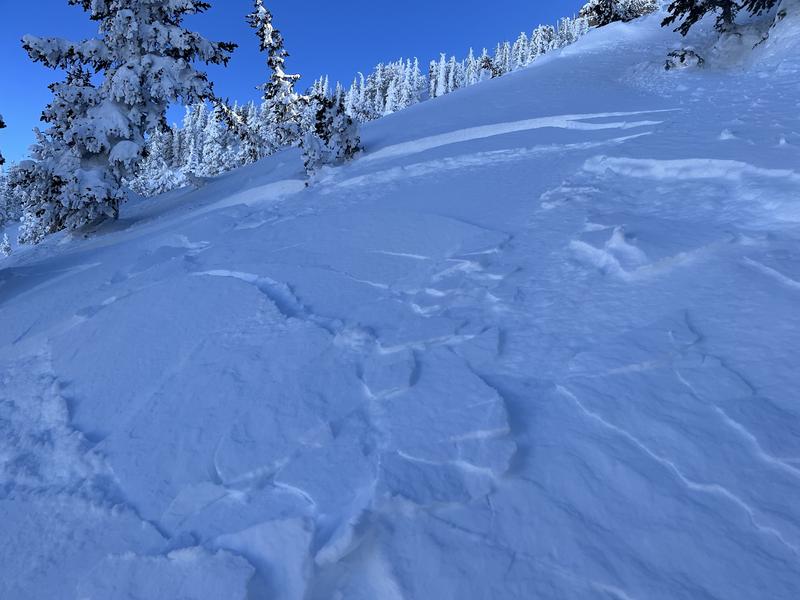This morning under clear skies temperatures are in the low teens F at all elevations, about 15 degrees warmer than yesterday morning. Winds are averaging 7-9 mph gusting to 15 mph from the NW. On high peaks near 11,000', winds are blowing 25 mph.
Today, winds will continue blowing from the northwest as they are this morning. With clear skies and strong sunshine, temperatures will quickly rise into the 20s F.
Looking ahead, temperatures will continue to warm through the rest of the week with clear, sunny weather. Another storm may arrive Sunday/Monday.
Yesterday, sunny slopes received enough sunshine and warming and they should have an ice crust on them this morning which will soften as temperatures warm this morning. Most northerly and east facing slopes have fantastic powder.Over the weekend, there were many wind loaded slopes that produced natural and human-triggered avalanches. What stands out are the slides that broke on a layer of very small facets next to an ice crust buried 2-3 feet deep. Some were several hundred feet wide like
one in upper Little Cottonwood Canyon that happened on Sunday. These slides have mostly occurred on sunny slopes (southeast, south, southwest, and west facing) like one that was spotted
yesterday in Big Cottonwood Canyon on a southeast facing slope at 9500 ft.
See the full list of avalanche activity
HERE and you can filter slides by region and date.













